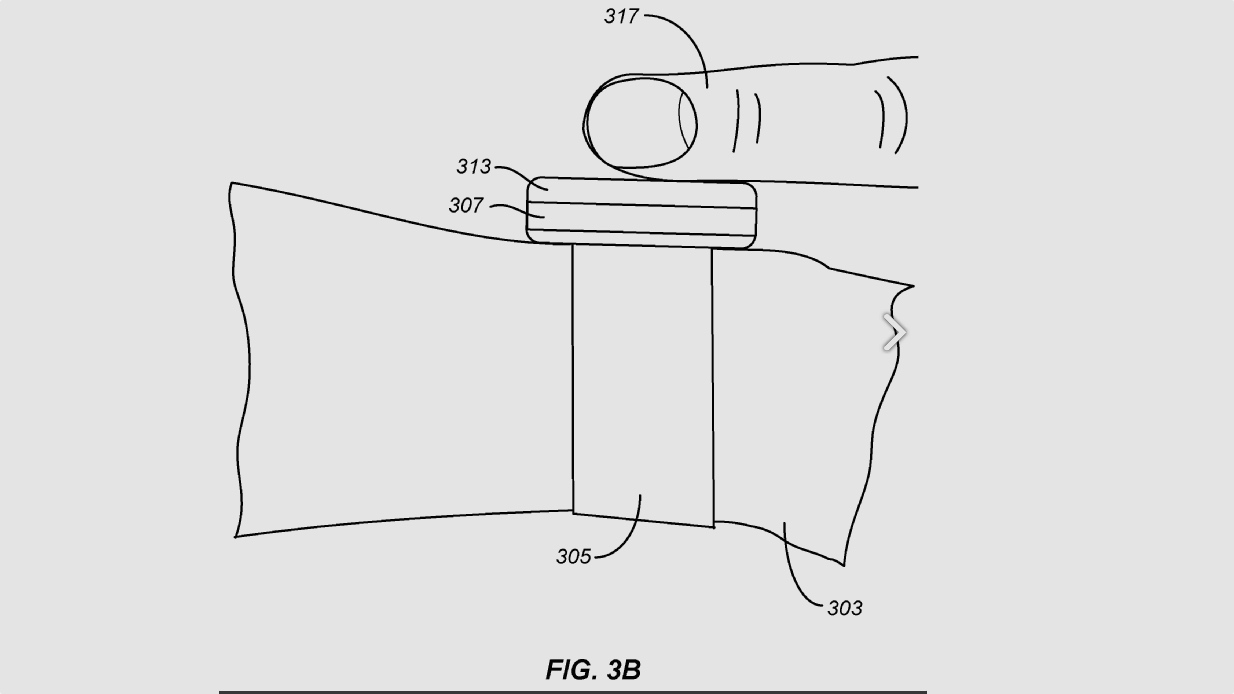
Fitbit’s blood pressure technology could be closer than we thought after it filed a patent for a special wearable sensor.
The patent outlines a pressure sensor in the display, which mimics a blood pressure cuff.
A traditional blood pressure cuff works by restricting the blood flow through an artery and measuring the strength of the heart rate against that pressure.
Fitbit’s idea works the same way, but with a force-sensitive panel, possibly on the display.
Wareable
By pressing the finger against this panel, the wearer could create their own arterial pressure.
Fitbit talks about on-screen instructions could guide the user on how hard to press, and the PPG sensor would feedback data on heart rate.
“A user applies a variable pressure to his or her blood vessels while a PPG sensor measures the amplitude of blood volume pulses. The resulting PPG signal and associated pressure data is used to calculate blood pressure. Standard approaches to determining blood pressure from oscillometric data can be used,” reads the Fitbit patent.
However, the patent does go on to cover a wide range of scenarios about the exact way force pressure data could be obtained.
It outlines the possibility of using a finger or pressing the PPG sensor against other, unspecified places of the body.
Wareable
And the patent also talks about the use of other sensors:
“In some embodiments, one or more processors are configured to obtain the PTT data from the PPG sensor data and data from another sensor.
"For example, the other sensor may be an EKG electrode, a phono cardiography (PCG) sensor, a ballistocardiography (BCG) sensor, an impedance plethysmography (IPG) sensor, an ultrasound sensor, or a force sensor,” reads the patent.
It’s no secret that Fitbit has been working on blood pressure technology – it was confirmed to Wareable by Fitbit in an interview way back in 2021.
We've already seen blood pressure tracking consumer wearables, but none are quite the seamless integration we were promised.
The Samsung Galaxy Watch 5 can estimate blood pressure but must be regularly calibrated to a cuff.
The Huawei Watch D can also take readings but uses a bulky inflatable cuff in the watch strap. Neither implementation is quite ready for everyday smartwatch wearers.
However, Valencell showed off cuffless blood pressure tracking at CES 2023, so the technology is certainly getting closer to prime time. This is done via the PPG sensor, but using a finger-tip clip, similar to medical-grade SpO2 monitors.
We have also spoken to Movano, which has started trials on blood pressure using its RF sensor.
That's four current blood pressure projects, and each uses a different approach.
Fitbit started large-scale studies back in 2021, using the Fitbit Sense. That study focused on examining the link between Pulse Arrival Time, and blood pressure.
So it might be that Fitbit doesn’t need to use pressure sensors to gauge blood pressure – and this patent simply protects one implementation.
But it’s interesting to see Fitbit looking at different technologies and ideas – and we hope whichever method it chooses – hits the FDA for clearance before long.
How we test
